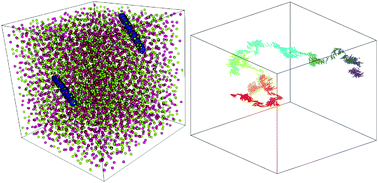Translational dynamics of a rod-like probe in supercooled liquids: an experimentally realizable method to study Stokes–Einstein breakdown, dynamic heterogeneity, and amorphous order†
Abstract
The use of probe molecules to extract the local dynamical and structural properties of complex dynamical systems is an age-old technique both in simulations and in experiments. A lot of important information which is not immediately accessible from bulk measurements can be accessed via these local measurements. Still, a detailed understanding of how a probe particle dynamics is affected by the surrounding liquid medium is lacking, especially in the supercooled temperature regime. This work shows how the translational dynamics of a rod-like particle immersed in a supercooled liquid can give us information on the growth of the correlation length scales associated with dynamical heterogeneity and the multi-body static correlations in the medium. This work also provides an understanding of the breakdown of Stokes–Einstein and Stokes–Einstein–Debye relations in supercooled liquids along with a unified scaling theory that rationalizes all the observed results. Finally, this work proposes a novel yet simple method accessible in experiments to measure the growth of these important length scales in molecular glass-forming liquids.



 Please wait while we load your content...
Please wait while we load your content...